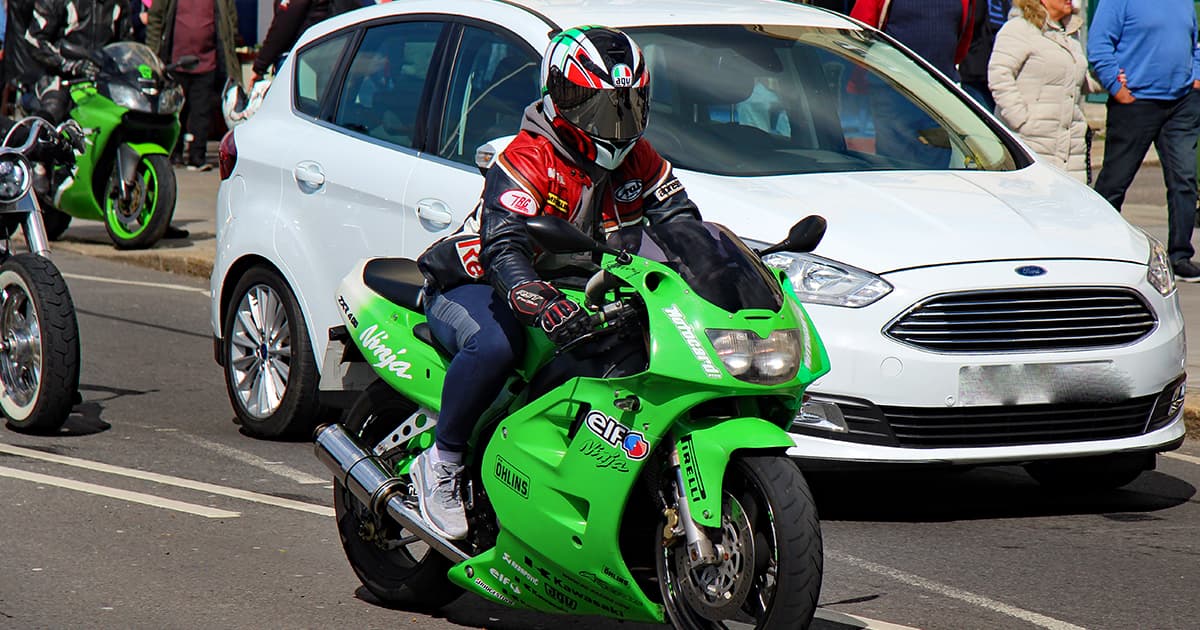5 Things You Don't Know About Motorcycle Insurance

Insurance for motorcycles is similar to car insurance but tailored to the specific needs of motorcycle riders.
Like car insurance, motorcycle insurance includes liability coverage, which helps pay for medical bills and property damage if you're at fault in an accident.
Here are 5 tips about motorcycle insurance:
- Seasonal Coverage: Some insurance companies offer seasonal motorcycle insurance policies, which allow riders to only pay for coverage during the months they use their motorcycles. This can be a cost-effective option for riders in regions with harsh winters.
- Discounts for Safety Courses: Completing a motorcycle safety course can sometimes qualify you for a discount on your insurance premium. These courses teach valuable skills that can help reduce the risk of accidents.
- Coverage for Customizations: If you've made customizations to your motorcycle, such as adding a custom paint job or performance upgrades, you may need additional coverage to protect these investments. Standard policies may not fully cover custom parts and equipment.
- Accessory Coverage: In addition to customizations, motorcycle insurance can also cover accessories like helmets, riding gear, and saddlebags. This coverage can help you replace these items if they're damaged in an accident or stolen.
- Lay-Up Policies: Some insurers offer lay-up policies for motorcycles that are not used during the winter months. These policies provide comprehensive coverage while the motorcycle is in storage and can be a more affordable option than year-round coverage.
Did you know? On average, motorcycles are about twice as fuel efficient as cars. Insurance statistics show that in inner cities, one in five motorcycles are stolen. Honda is the most common brand stolen and Harley is the least.
Do you run a motorcycle dealership or shop?
Our business insurance experts can help with your business insurance needs.
Here are 5 facts about motorcycles:
- They were originally steam-powered: Before gasoline-powered engines became popular, motorcycles had steam engines in the 19th century. However, steam motorcycles were heavy, complex, and had limited range, leading to the dominance of gasoline engines.
- Harley-Davidson once made bicycles: Before focusing solely on motorcycles, Harley-Davidson produced bicycles from 1917 to 1921. These bicycles were built to be durable and featured some of the same design elements found in their motorcycles.
- The fastest motorcycle is a turbine-powered bike: The Dodge Tomahawk, powered by a 500-horsepower, 8.3-liter V10 engine, holds the record for the fastest motorcycle. However, it's not street-legal and was more of a concept vehicle than a practical motorcycle.
- Some motorcycles have more than two wheels: While most motorcycles have two wheels, there are exceptions. Some motorcycles, known as trikes, have three wheels, with two in the front and one in the back or vice versa. These trikes offer more stability than traditional motorcycles.
- The longest motorcycle is over 31 feet long: The longest motorcycle ever built, the American Dream, measures an astonishing 31 feet, 4.5 inches long (9.4 metres, 11.4 centimetres long). It was constructed by a team led by creator Tom Wiberg in Sweden and features multiple engines and wheels.
What is the hardest thing to learn on a motorcycle?
Using the clutch is one of the more challenging aspects of learning to ride a motorcycle, especially for those who are not familiar with manual transmissions.
What does CC mean in motorcycles?
In motorcycles, "cc" stands for cubic centimeters, which is a measure of engine displacement. Engine displacement is the total volume of all the cylinders in an engine. It is used as an indicator of the engine's size and power output. CC helps us understand the pumping capacity of the engine 1000 CC = 1 Litre. This means that a 1000 CC engine is the equivalent displacement to a 1-Litre engine.
In general, a higher cc value indicates a larger engine, which can typically produce more power. Other factors such as engine design, fuel delivery system, and tuning also affect the engine's performance. For beginners, it is best advised to start off with 150 or 200cc bike.
Motorcycles with larger engine displacements are often used for purposes such as touring or cruising, where more power and torque are desired. Smaller engine displacements are common in commuter bikes and beginner-friendly motorcycles.
What motorcycle is most likely to be stolen?
The most commonly stolen motorcycle brand is Honda, accounting for around 40% of all reported motorcycle thefts.
Historically, popular, and high-end brands like Honda, Yamaha, Suzuki, and Kawasaki have been among the most stolen motorcycles due to their widespread availability and desirable parts. Additionally, Harley-Davidson motorcycles are also often targeted by thieves, given their popularity and high resale value.
To protect your motorcycle from theft, consider using anti-theft devices such as locks, alarms, and tracking systems. Parking in well-lit and secure areas can also help deter thieves. Comprehensive motorcycle insurance can provide financial protection in case your motorcycle is stolen.
Did you know? Switching is Easy! Save up to 30% on Home Insurance when you switch to Western Financial Group.



